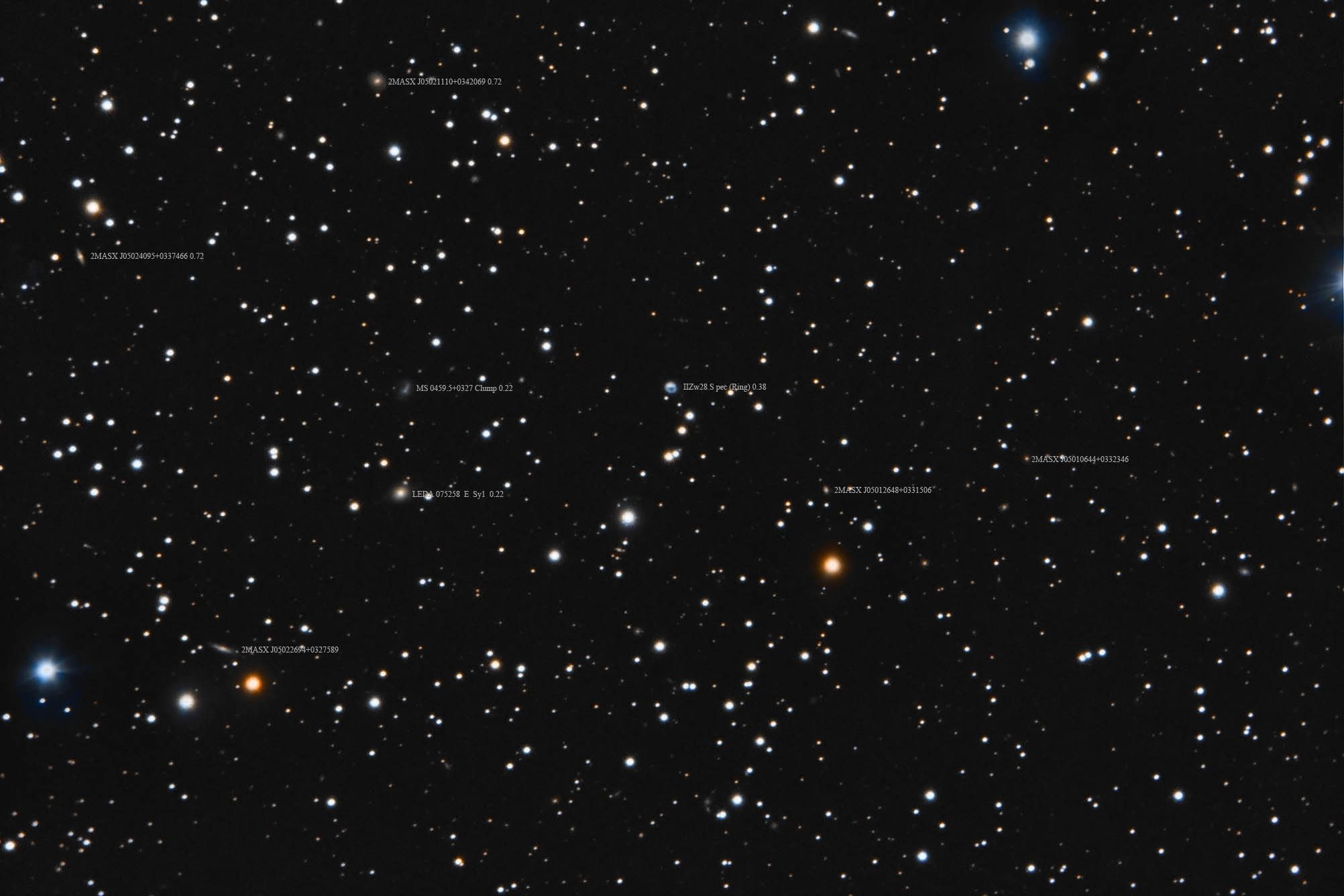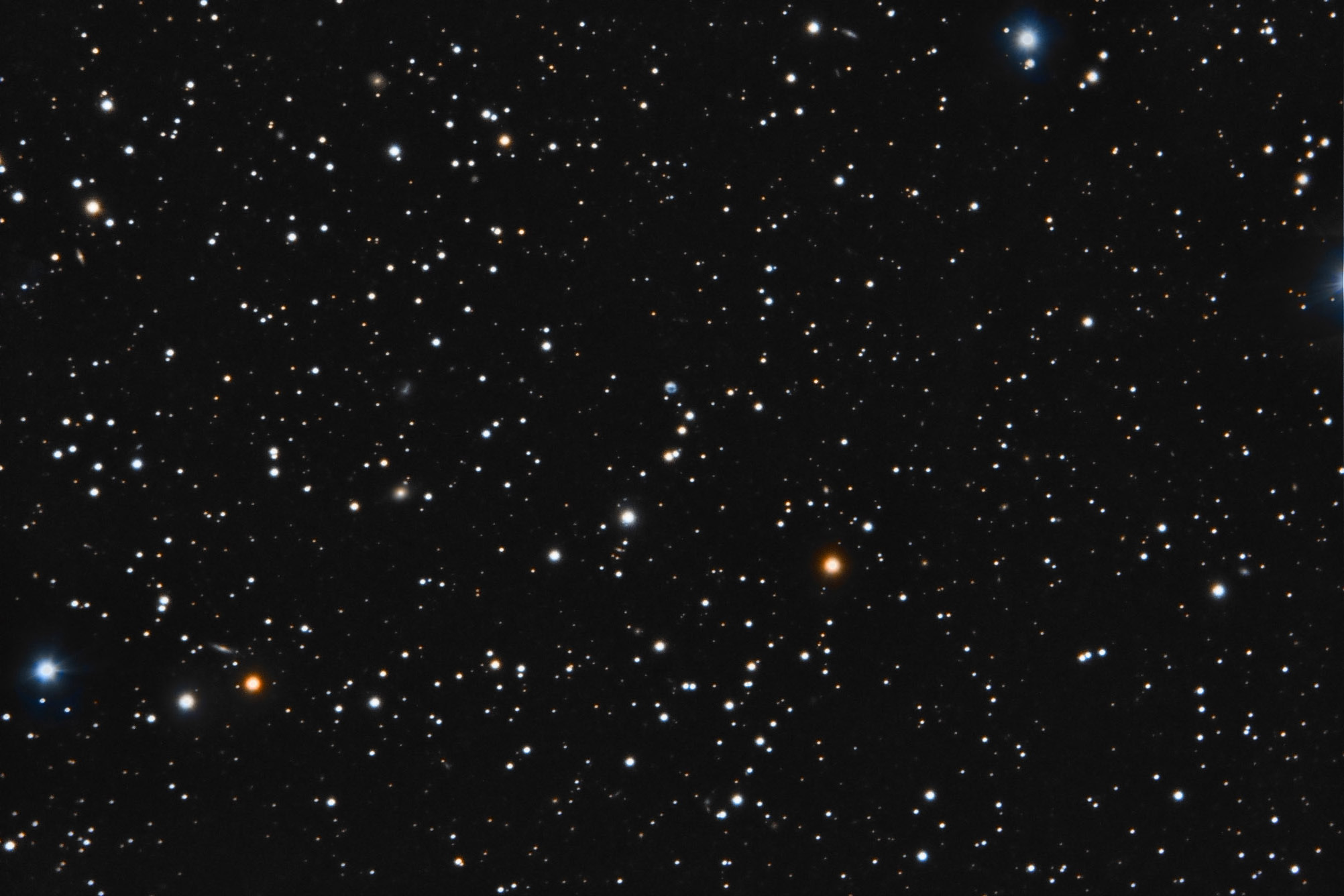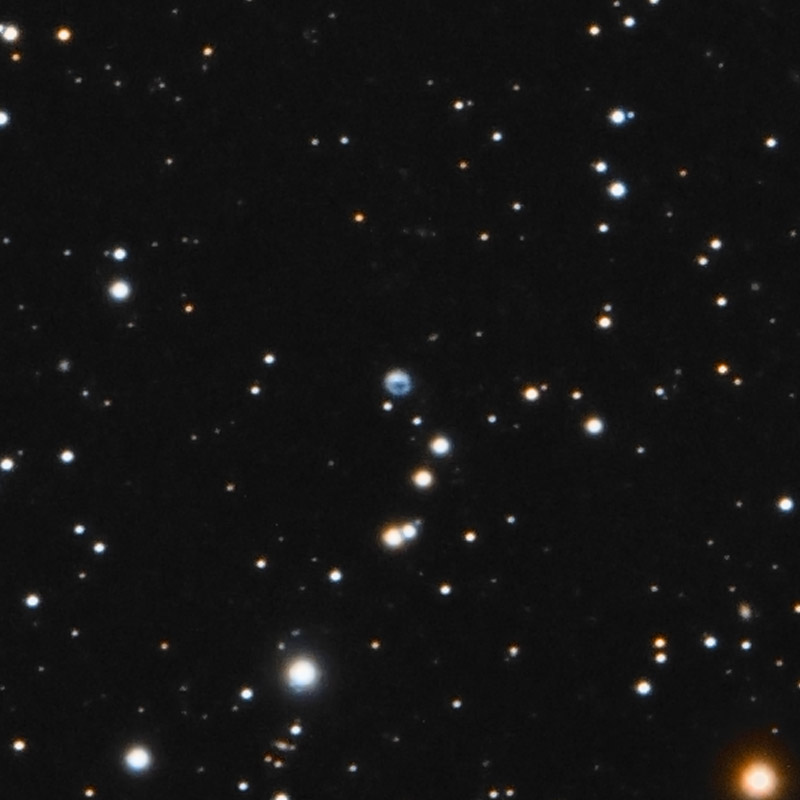| Description | Images |
Object name: IIZw28Designation(s): IIZw28, IIZw28 is a small empty ring galaxy in Orion just east of the bottom of his shield. Rings of its type are thought to be caused by a small dense galaxy colliding with a disk galaxy almost perfectly face on like a bullet hitting a target. This blows the core to the edge of the ring. Usually, the "bullet" galaxy is quite obvious. Here there's no apparent "bullet" galaxy. Since the ring is thought to be a rather short-lived condition it should be nearby. One possibility is that the dense northern part of the ring is due to the superposition of the "bullet" galaxy and the displaced core. A note at NED says the galaxy has three distinct stellar populations; "...young stars in the ring, A-stars which are distributed inside the ring (this is strong evidence for the passage of the wave) and an old stellar population in the edge of the ring. It is thus very likely that the companion (is) seen in projection like in NGC 985." The mentioned NGC 985 is at -8 degrees and so far has been in too poor of seeing each time I tried for it. Maybe next year. It is more distant yet about twice the angular size of IIZw28. I measure the size of IIZw28 at 33,000 light-years so it is a small galaxy and target for the bullet galaxy to hit (maybe it has a lot of dark matter to draw in the bullet galaxy). Related Designation(s):2MASS J05014204+0334282, 2MASX J05014205+0334278, CGPG 0459.0+0330, II Zw 028, IIZw28, IRAS F04590+0330, PGC 016572, VV 790b, [RC2] A0459+03, |


